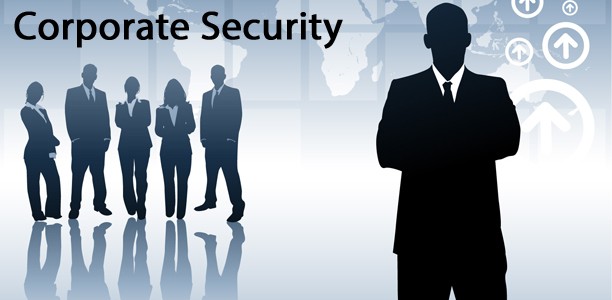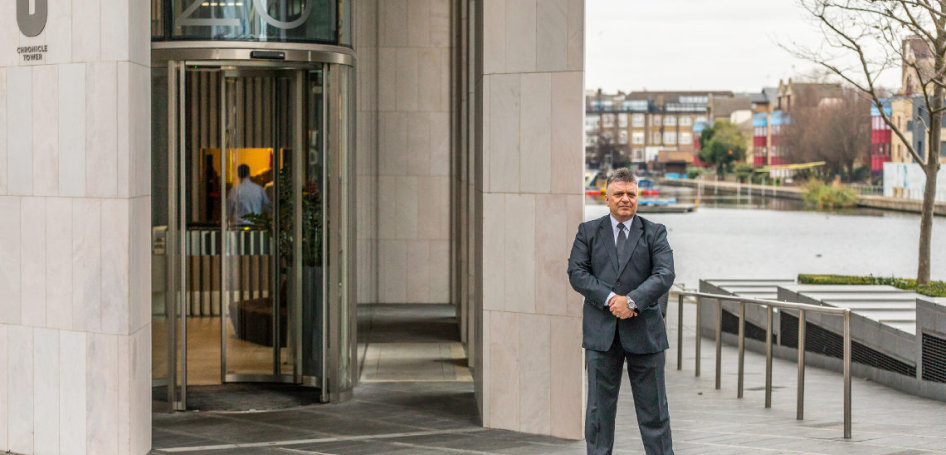Releasing the Power of Corporate Security: A Comprehensive Overview
From Cybersecurity to Physical Procedures: Strengthening Company Safety in a Changing Globe
By integrating the toughness of both cybersecurity and physical protection, firms can develop a comprehensive defense technique that attends to the varied array of threats they deal with. In this conversation, we will certainly explore the altering danger landscape, the demand to incorporate cybersecurity and physical security, the implementation of multi-factor authentication steps, the significance of worker awareness and training, and the adaptation of safety and security actions for remote labor forces. By taking a look at these vital locations, we will gain beneficial understandings into just how companies can strengthen their company protection in an ever-changing world.
Understanding the Transforming Danger Landscape
The developing nature of the modern globe necessitates a comprehensive understanding of the transforming risk landscape for effective business safety and security. In today's digital and interconnected age, threats to business security have actually ended up being more complicated and sophisticated. As innovation advancements and businesses end up being significantly reliant on electronic infrastructure, the possibility for cyberattacks, data breaches, and various other safety and security violations has substantially increased. It is critical for organizations to remain informed and adapt their security determines to resolve these developing hazards.
One key aspect of understanding the transforming danger landscape is recognizing the various types of risks that organizations encounter. Furthermore, physical hazards such as burglary, vandalism, and company espionage continue to be common problems for businesses.
Monitoring and examining the threat landscape is essential in order to identify possible risks and susceptabilities. This includes remaining updated on the newest cybersecurity patterns, analyzing risk intelligence records, and carrying out routine risk analyses. By understanding the altering threat landscape, companies can proactively carry out proper protection procedures to minimize threats and protect their properties, online reputation, and stakeholders.
Integrating Cybersecurity and Physical Safety And Security
Incorporating cybersecurity and physical safety is important for thorough company security in today's electronic and interconnected landscape. As organizations increasingly rely upon modern technology and interconnected systems, the borders between physical and cyber hazards are becoming obscured. To effectively protect versus these threats, an all natural approach that integrates both cybersecurity and physical safety and security steps is necessary.
Cybersecurity concentrates on safeguarding electronic possessions, such as systems, data, and networks, from unapproved access, disruption, and burglary. Physical safety and security, on the various other hand, incorporates procedures to protect physical assets, people, and facilities from susceptabilities and risks. By integrating these 2 domains, organizations can address vulnerabilities and threats from both electronic and physical angles, consequently enhancing their general security pose.
The assimilation of these two self-controls permits for a more extensive understanding of safety threats and makes it possible for a unified response to events. For example, physical accessibility controls can be boosted by incorporating them with cybersecurity methods, such as two-factor verification or biometric identification. Cybersecurity procedures can be matched by physical safety and security steps, such as surveillance cameras, alarm systems, and safe gain access to points.

Executing Multi-Factor Authentication Procedures
As companies progressively focus on extensive protection steps, one reliable method is the execution of multi-factor authentication procedures. Multi-factor authentication (MFA) is a security technique that calls for individuals to offer numerous forms of recognition to access a system or application. This approach adds an additional layer of defense by incorporating something the customer knows, such as a password, with something they have, like a safety or a finger print token.
By implementing MFA, organizations can substantially boost their security position - corporate security. Conventional password-based verification has its restrictions, as passwords can be quickly endangered or neglected. MFA minimizes these threats by including an added authentication factor, making it harder for unauthorized individuals to access to sensitive information
There are numerous kinds of multi-factor verification approaches readily available, consisting of biometric authentication, SMS-based verification codes, and hardware tokens. Organizations require to analyze their details needs and pick one of the most suitable MFA service for their requirements.
Nevertheless, the implementation of MFA should be thoroughly planned and performed. It is important to strike a balance between security and usability to prevent customer aggravation and resistance. Organizations ought to also consider possible compatibility concerns and supply appropriate training and support to guarantee a smooth shift.
Enhancing Staff Member Understanding and Training
To reinforce corporate security, organizations should prioritize boosting employee understanding and training. In today's swiftly developing threat landscape, staff members play a critical function in safeguarding a company's sensitive info and assets. Regrettably, numerous protection breaches take place due to human mistake or lack of understanding. Consequently, organizations require to spend in extensive training programs to enlighten their employees regarding potential dangers and the ideal practices for alleviating them.
Effective worker understanding and training programs need to cover a wide range of topics, including data security, phishing assaults, social design, password health, and physical security steps. These programs need to be customized to the details requirements and duties of different worker functions within the company. Normal training workshops, simulations, and sessions can aid staff members create the essential abilities and understanding to respond and determine to safety dangers properly.
Moreover, companies must encourage a society of safety awareness and give recurring updates and pointers to maintain workers informed concerning the current threats and reduction methods. This can be done via interior communication networks, such as newsletters, intranet websites, and e-mail campaigns. By fostering a security-conscious labor force, organizations can significantly minimize the likelihood of protection events and shield their important properties from unauthorized accessibility or compromise.

Adapting Security Steps for Remote Labor Force
Adjusting corporate safety and security procedures to suit a remote labor force is essential in making sure the defense of delicate details and assets (corporate security). With the increasing trend of remote work, organizations need to execute suitable security measures to reduce go to the website the risks connected with this brand-new method of functioning
One critical facet of adjusting protection actions for remote job is developing safe interaction channels. Encrypted messaging platforms and virtual private networks (VPNs) can aid shield delicate info and stop unauthorized access. Additionally, companies need to apply the usage of solid passwords and multi-factor authentication to enhance the security of remote accessibility.
An additional crucial consideration is the implementation of safe and secure remote accessibility options. This involves providing staff members with safe and secure accessibility to corporate sources and information through digital desktop computer infrastructure (VDI), remote desktop computer procedures (RDP), or cloud-based services. These technologies make certain that delicate information continues to be secured while enabling workers to perform their duties efficiently.

Last but not least, comprehensive safety and security understanding training is crucial for remote employees. Training sessions must cover ideal techniques for firmly accessing and dealing with delicate details, recognizing and reporting phishing efforts, and maintaining the overall cybersecurity hygiene.
Conclusion
In final thought, as the risk landscape continues to advance, it is vital for organizations to strengthen their protection determines both in the cyber and physical domains. Incorporating cybersecurity and physical safety, applying multi-factor verification steps, and boosting worker awareness and training are crucial steps in the direction of accomplishing robust business security.
In this conversation, we will discover the changing hazard landscape, the need to incorporate cybersecurity and physical security, the application of multi-factor verification procedures, the significance of staff member awareness click for more and training, and the adjustment of safety and security actions for remote workforces. Cybersecurity actions can be complemented by physical safety measures, such as monitoring cameras, alarms, and safe and secure access factors.
As companies increasingly focus on thorough safety and security procedures, one effective method is the execution of multi-factor verification measures.In final thought, as the hazard landscape continues to develop, it is critical for organizations to strengthen their safety gauges both in the cyber and physical domain names. Integrating cybersecurity and physical safety and security, carrying out multi-factor verification measures, and improving worker recognition and training are essential steps towards achieving robust business safety.